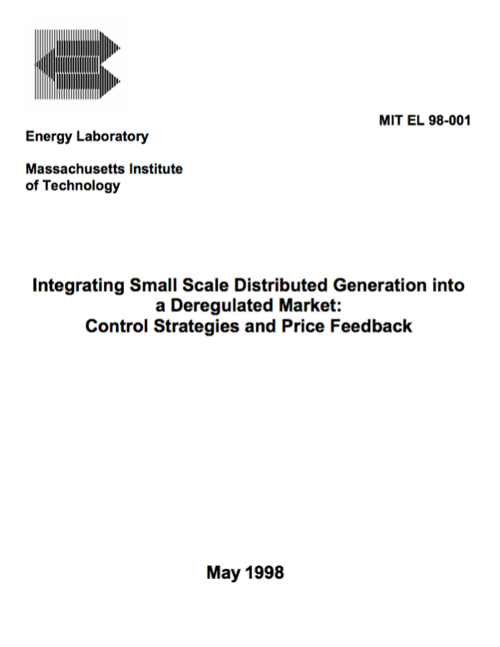Small scale power generating technologies, such as gas turbines, small hydro turbines, photovoltaics, wind turbines and fuel cells, are gradually replacing conventional generating technologies, for various applications, in the electric power system. The industry restructuring process in the United States is exposing the power sector to market forces, which is creating competitive structures for generation and alternative regulatory structures for the transmission and distribution systems. The potentially conflicting economic and technical demands of the new, independent generators introduce a set of significant uncertainties. What balance between market forces and centralized control will be found to coordinate distribution system operations? How will the siting of numerous small scale generators in distribution feeders impact the technical operations and control of the distribution system? Who will provide ancillary services (such as voltage support and spinning reserves) in the new competitive environment?
This project investigates both the engineering and market integration of distributed generators into the distribution system. On the technical side, this project investigates the frequency performance of a distributed system that has multiple small scale generators. Using IEEE sample distribution systems and new dynamic generator models, this project develops general methods for ensuring system stability. One such method is to specify ranges, or standards, for governor settings which will ensure local frequency stability.
With respect to the emerging competitive markets, this project develops a price-based control concept which allows independent generators to participate in both the energy and the services markets, with minimal constraints from a central authority. In particular, a closed loop price signal is designed to operate in a competitive market and facilitate desired energy transactions without depending upon the extensive information and centralized control structure of the traditional power system. This project simulates the use of the price signal, and demonstrates its ability to coordinate generator actions in the competitive market while also maintaining the desired level of system reliability and stability.
The policies developed during the industry restructuring process, and the extent to which these policies open the emerging markets to distributed generators, will impact the penetration of distributed generators in the distribution system and their ability to participate in the competitive markets. In particular, state polices which constrain distributed generators to be owned by local distribution utilities will prevent these generators from becoming equal players in the competitive markets. Alternatively, retail competition may encourage an increased use of distributed generators. A closed loop price signal, as proposed here, is an important element of the industry restructuring process because it promotes the development of competitive markets and the full integration of distributed generators into these markets.
